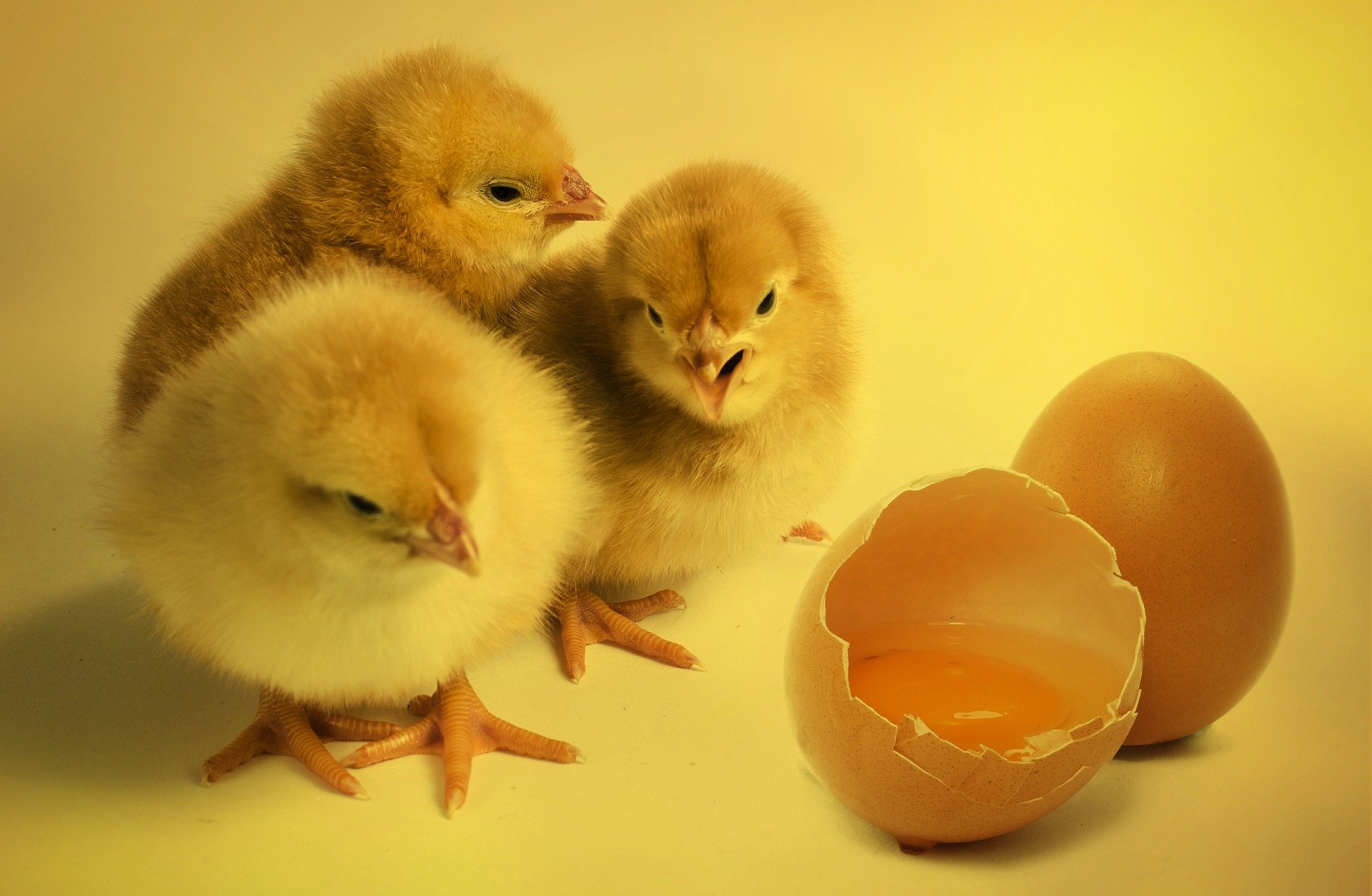How are Eggs Formed
Peeling back the layers
About
Our Feed
Poultry
Care Corner
Poultry
Products
Grains &
Simple Ingredients
Where
to Buy
How Are Eggs Made? Peeling Back The Layers

Eggs are part of a hen’s reproductive system. When a hen reaches maturity, lighting conditions trigger hormones to start the egg laying cycle. It takes about 25 hours for a hen to create an egg from start to finish. As soon as one egg is laid, the whole process starts all over again and a new egg begins to form. Lucky us!
Birds are unique among animals because only the left ovary fully matures to the stage where it releases eggs. A laying hen’s ovary holds thousands of tiny ova, or future egg yolks.
It’s interesting to note that eggs are produced in layers starting from the inside out. Here’s an outline of the amazing process of egg formation in a hen.
The Yolk – It starts with the yolk forming in the hen’s ovary. When the yolk reaches the right size, it is released into the oviduct, where the rest of the egg will form.
The White – In its journey through the oviduct, the next layer to be added is the egg white (albumen). This layer takes about 3 hours to be formed.
The Shell Membrane – The next layer to be added in the oviduct is the shell membrane. This takes about 1.25 hours. It is a very thin layer between the egg white and the shell, and it almost looks like tissue paper. Have you ever cracked an egg shell but the egg didn’t break? The shell membrane was still intact holding everything together.
The Shell – The egg then reaches the hen’s uterus, also known as the shell gland. This is where the shell is added to the egg. The shell is also formed in layers over the course of 19 hours, where pigment is also added. All egg shells begin as white. Blue and brown pigments are added during the shell forming process. The color of the pigment depends on the breed of chicken.
An interesting note about egg coloration. Brown pigment is added last in the formation of an egg shell. It is only found on the surface of the egg. When you crack open a brown egg, the inside of the egg shell will be white. Blue pigment is added early in the shell formation process. The color will penetrate the entire shell. When you crack open a blue egg, the inside of the shell will be blue. Green eggs are a combination of brown and blue pigments. White eggs contain no pigment at all.
The Bloom – The bloom is the protective layer or cuticle that covers the egg shell and is the last layer added in egg formation. It is added after the egg leaves the uterus, right before it exits from the hen’s vent. This coating seals out bacteria and maintains the moisture inside the egg. Leaving the bloom intact will help keep your eggs fresher, longer.
Want to learn more? Visit our Poultry Care Corner for more great information about chickens.
